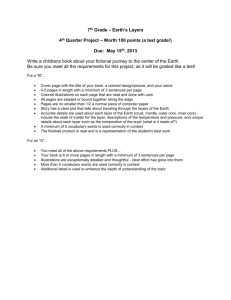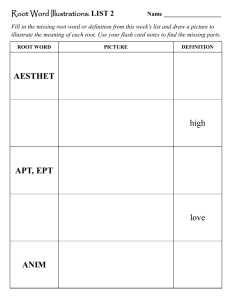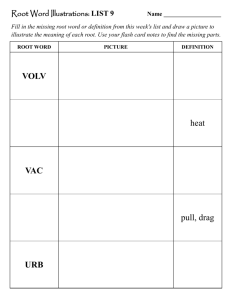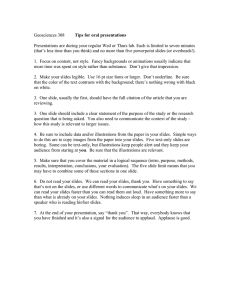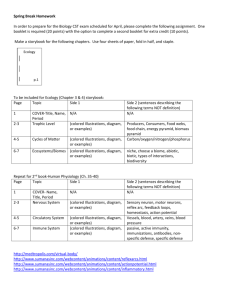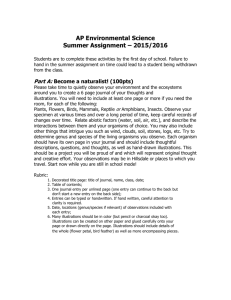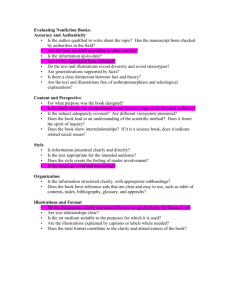-
advertisement
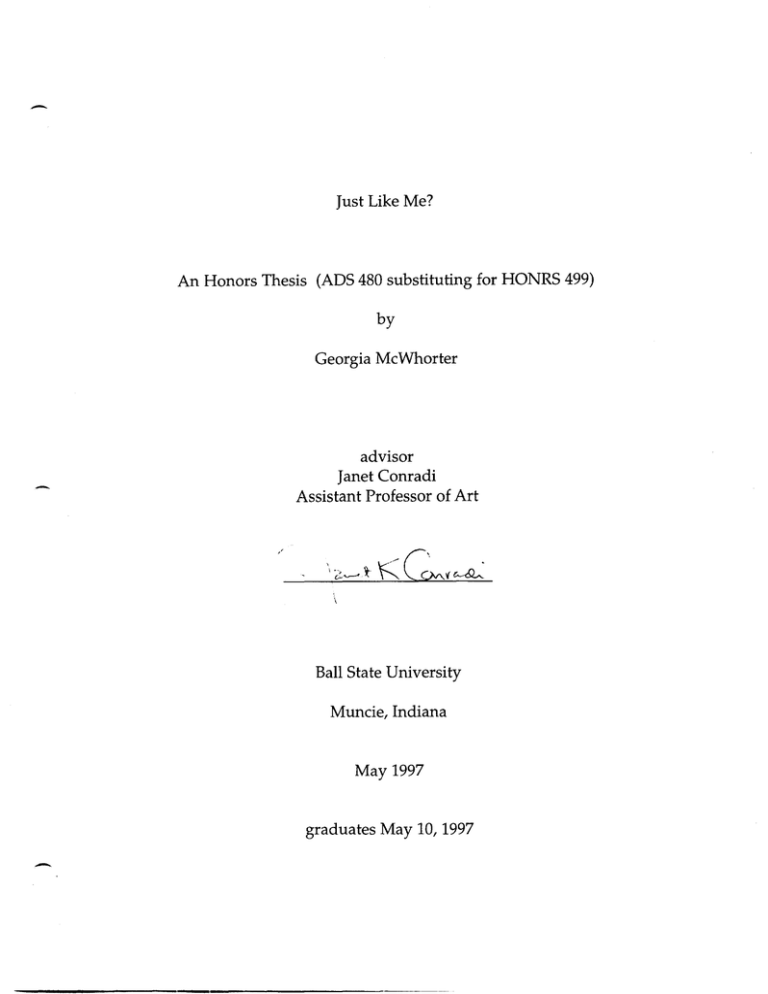
Just Like Me? An Honors Thesis (ADS 480 substituting for HONRS 499) by Georgia McWhorter advisor Janet Conradi Assistant Professor of Art Ball State University Muncie, Indiana May 1997 graduates May 10, 1997 - Sp Ce", lhc'//·" 1 ..- Purpose of Thesis Everyone has something about themselves that is different from anyone else, and it is these differences that make people individuals. The purpose of this project is to explain to young children that everyone is different in their own way. I'm trying to get the point across that whether someone is short, tall, fat, skinny, black, white, male, female, homosexual, heterosexual, blond, redheaded, has a physical disability, etc., they are all special people with feelings. Children need to recognize while they are young that everyone has something different about them that is different from everyone else. Children need to realize that it is O.K. to not be like everyone else and that is these differences - that make people individuals. I created a children's book that focuses on making people's differences more positive in the eyes of children. The target audience of the book is children ages three to eight years old. The intent is for parents or teachers to read this book with their children to help them further understand and link the characters with real life situations. - 2 _ Inspiration for the Topic The topic of the differences in people's looks came about after a series of conversations with many people. It started with someone making the comment to me that they would never consider living in the South because they were from the North. This person believed that people from the South do not like people from the North, and they also believed that everyone that lives in the southern portion of the United States is prejudiced. I was born in Iowa, but moved to Birmingham, Alabama at the age of six. I grew up in Alabama and lived there until the middle of my junior year in high school before my family - was transferred to Indiana. Still considering Alabama my home, I took great offense to this comment. I had to explain to the person that him making that comment proved that he in fact was prejudiced against a large portion of the United States without even spending any large amount of time there or actually knowing anyone who lived there. I also explained to him that my experience living in Alabama for eleven years exposed me to so many more different cultures and people of different ethnic backgrounds than any of my eleven years of living in the midwest. Yes, there is prejudice in the South, but in my experience, prejudice exists everywhere, including the North, East, and West. Prejudice is not confined to any particular area of the United States, it is con- - fined to the minds of ignorant people. The only way to try and dissolve some of 3 those prejudices is to help open their minds. By teaching children while they are young that not being like everyone else is O.K., maybe these children will grow up to be open minded and informed adults. I extended the topic to include the differences in all people. I decided that children learn the best when a topic is presented to them in a fun way. The idea for a children's book that parents and teachers could share with their children was the perfect solution. Explanation of Visual Approach I wanted to approach this book in more of a visual interpretation. There is some text, but mainly the illustrations are to be focused on. I wanted to make - the book visually interesting to the viewer by not making the images appear so literal. The characters and their surroundings still convey the message of "It's O.K. to be different," but the ways in which the characters are portrayed visually are not realistic. For example, a man could have polka-dotted skin or green hair. I also did not want to use stereotypical characteristics in the characters to portray their differences. The whole point was to distract from the characteristics that today's society has deemed "different." I wanted to get the point across in a visually fun way that children could understand. Illustration Process -. The materials used in the construction of this book were: one-ply bristol board, drawing paper, black india ink, pastels, pastel pencils, rice paper, mat 4 board, spray adhesive, spray fixative, craft glue, and artist's tape. The layout was done in Quark XPress on a Power Macintosh. I began by drawing the illustrations out in pencil on drawing paper and then painted the lines with black india ink to form the outlines of the drawings. I then scanned the black and white line illustrations into the computer and imported the images into Quark XPress. Next, I added the written text. I used two different fonts to in order to distinguish between characters' dialogue. I then printed out the black and white illustrations with text on a laser printer. I then used these print-outs as a template for the color. I put one-ply bristol board cut to size over the black and white print-outs and loosely applied color with pastels and pastel pencils on the bristol board. I did not want the color and the line illustrations to match up exactly. I believe that it adds to the attractiveness of the illustrations to be slightly out of register. I applied spray-fixative to the colored boards in order to set the color and so that they would not smudge. The next step was to put the black and white line drawing and the color together. I manually fed the colored boards into the laser printer to print the black and white illustrations and the text onto the colored boards. The final step ,- was to get colored copies of the final colored illustrations to put in the final book.
